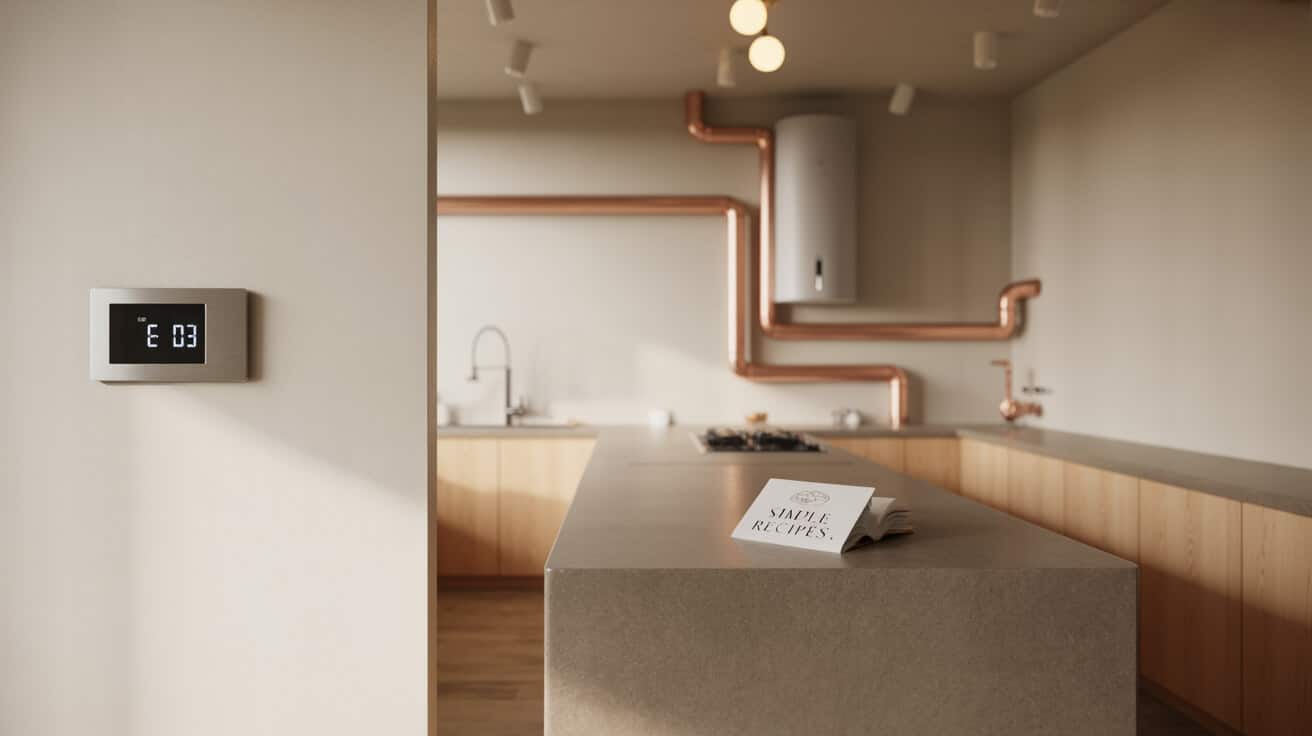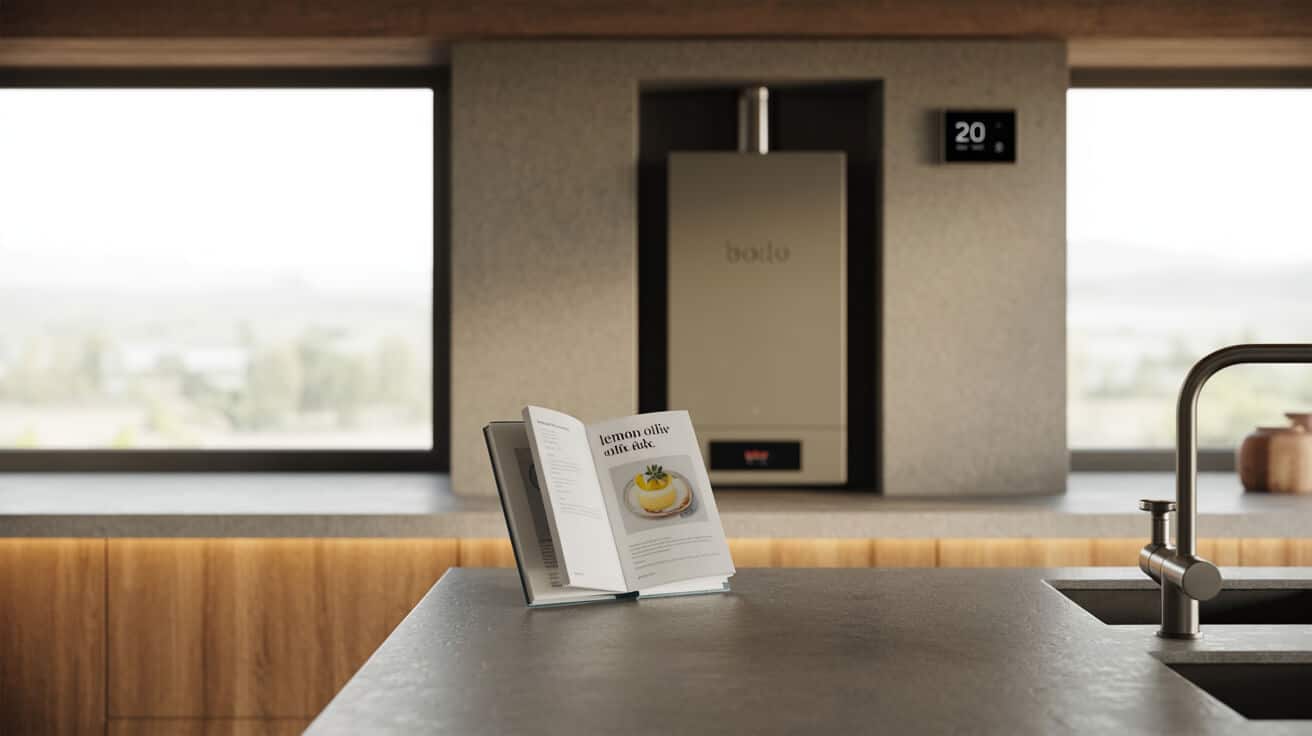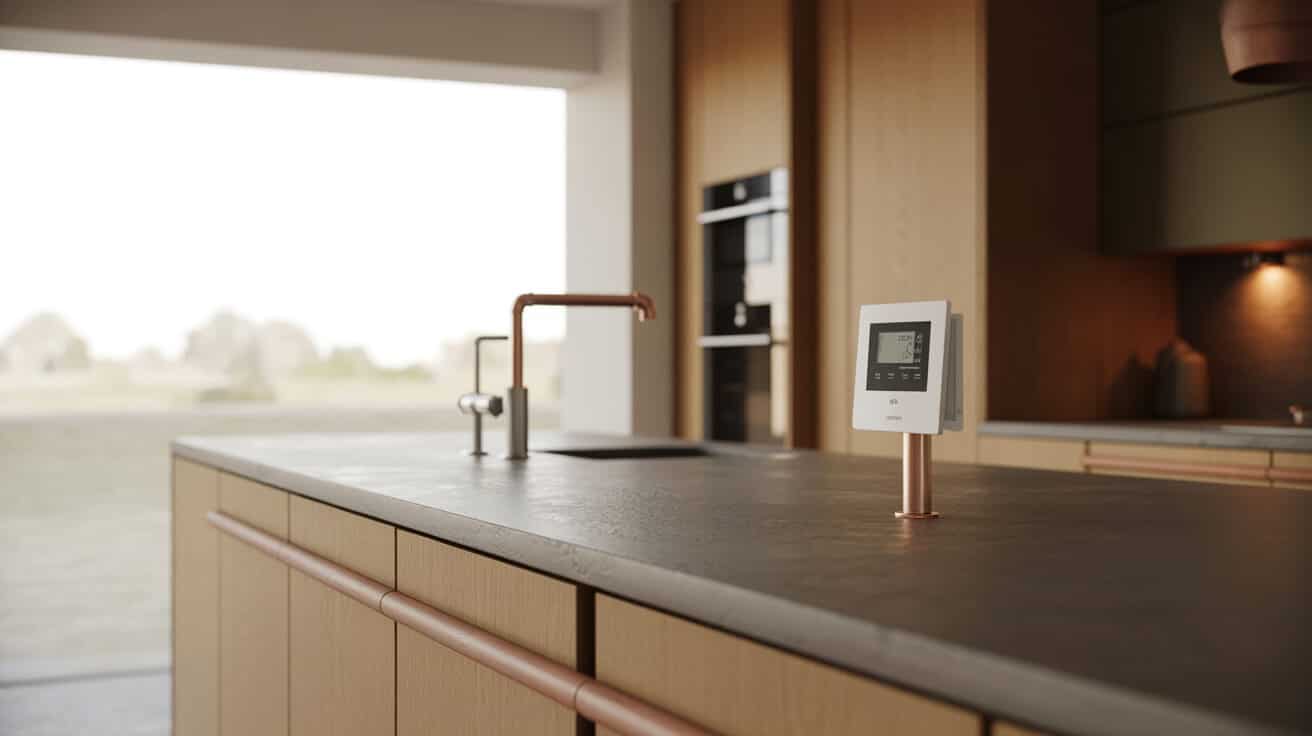Boiler underfloor heating systems represent an evolution from traditional radiator-based installations. These systems use a centrally located boiler—often a condensing type—to heat water which is then channelled through underfloor pipes, ensuring uniform warmth across an entire room or building. The method is increasingly utilised in both new constructions and retrofitted properties due to its energy efficiency, unobtrusive installation, and compliance with modern regulatory standards. This integrated approach meets the needs of homeowners, landlords, and commercial building managers by offering improved comfort and potential cost savings on energy bills.
Etymology or Name Origin
The term “boiler underfloor heating” fuses two architectural technologies: the boiler, a device rooted in early industrial processes that converts water to steam or hot water, and underfloor heating—a method that dates back to ancient heating systems such as Roman hypocausts. Over time, the integration of these systems has been driven by the desire to maximise energy efficiency and improve indoor comfort, leading to a technical evolution that blends traditional boiler technology with modern underfloor heat distribution. The terminology reflects both historical methods and contemporary engineering advancements.
Overview / Context
Boiler underfloor heating systems operate through the synergy of a highly efficient boiler and an extensive network of underfloor pipework. This system has emerged in response to the increasing demand for energy-efficient home heating. In a typical installation, a condensing boiler heats water to a lower temperature than conventional radiators, allowing the heated water to circulate through pipes installed beneath the floor. This approach leverages the thermal mass of the floor structure, resulting in a more stable and even temperature across the entire living space.
The adoption of these systems is informed by advances in heating technology and increasing regulatory pressures aimed at reducing carbon emissions and improving energy performance. As building codes evolve to require higher energy efficiency standards, the combination of boiler and underfloor heating has become a favoured solution. It is especially pertinent in regions where energy costs and environmental regulations are of significant concern, thus playing a central role in modern building services engineering.
History
Boiler underfloor heating systems have a historical lineage that traces back to the ancient use of radiant heat. Early examples include the Roman hypocaust system, which utilised an underfloor space to distribute heat from a central source. In the modern era, the development of conventional boiler systems during the industrial revolution laid the groundwork for centralised heating.
During the mid-20th century, improvements in boiler efficiency, particularly with the advent of condensing technology, led to significant shifts in how heat was generated and distributed. The latter part of the century saw a renewed interest in underfloor heating systems as a method to achieve more uniform and efficient heat dispersion. Advances in materials such as flexible PEX pipe and electronic control systems have since propelled the integration of these technologies, aligning with broader trends towards sustainable and energy-efficient design in both residential and commercial buildings.
The evolution of the technology is marked by gradual improvements in system reliability, ease of installation, and integration with smart home controls. Regulatory developments, such as stricter building codes and emission standards, have further catalysed the adoption of boiler underfloor heating. This historical progression reflects a continuous drive toward enhancing comfort while minimising energy waste, leading to the sophisticated systems in use today.

Concept / Description
Boiler underfloor heating systems are comprised of distinct yet interdependent components that work together to provide an even distribution of heat. At the heart of the system lies a boiler, typically a condensing model, which heats water that is subsequently circulated through a network of underfloor pipes. This design capitalises on the radiant properties of the floor, ensuring that warmth is delivered gradually and uniformly.
Technical Components and Architecture
- Boilers:
- Commonly, Condensing Boilers are used for their high efficiency.
- Boilers may be categorised as combi, system, or regular, depending on whether they require a separate hot water cylinder.
- They are rated for efficiency under standard tests and must adhere to certifications such as G3, ensuring safety for unvented systems.
- Underfloor Pipework:
- Pipes, often constructed of PEX or polybutylene, are arranged in a grid or loop configuration beneath the floor.
- The design of the pipe layout is critical to ensuring even heat distribution and minimising energy losses.
- Careful consideration is given to pipe spacing and insulation to optimise system performance.
- Manifolds and Circulation:
- Underfloor manifolds act as distribution hubs that channel heated water into individual loops.
- Circulator pumps maintain a consistent flow of water, ensuring that each zone of the underfloor network receives the appropriate level of heat.
- Flow balancing and pressure regulating valves are integrated to fine-tune system performance.
- Smart Controls and Diagnostic Tools:
- Modern systems incorporate smart thermostats and zoning controls that enable precise temperature management.
- Integration with digital control systems allows for real-time monitoring, remote diagnostics, and adaptive scheduling based on ambient conditions.
- Tools such as pressure gauges, thermal imaging cameras, and endoscopes assist in both installation and subsequent maintenance.
Operating Principles
The system functions based on the principles of radiant heating and efficient thermal transfer. The boiler heats water to a moderate temperature, typically lower than that used in conventional radiators, and circulates it through the underfloor network. As the heated water flows through the pipes, heat is radiated from the floor into the room, creating a uniform temperature profile. The combination of low temperature operation and radiant heat transfer not only enhances energy efficiency but also reduces heat loss, employing the thermal mass of the floor to stabilise indoor climate.
This approach minimises the typical stratification found in traditional systems, resulting in a more consistent and comfortable environment. The incorporation of smart thermostatic controls ensures adaptive regulation, maintaining the desired temperature levels while adjusting for external variables such as ambient temperature and occupancy.
Functionality / Purpose / Applications
Boiler underfloor heating systems are designed to deliver both comfort and efficiency across a range of applications. Their multifunctional nature makes them suitable for diverse environments, from residential homes to commercial buildings and institutional facilities.
Operational Principles
- Even Heat Distribution: The radiant quality of the floor-based system minimises temperature gradients within a room, ensuring seamless warmth across the entire space.
- Energy Efficiency: By operating at lower water temperatures and harnessing the thermal mass of the building structure, these systems achieve superior energy efficiency compared to traditional radiator systems.
- Thermal Comfort: The gentle, uniform heat produces a more comfortable indoor environment, reducing the discomfort associated with localised hot or cold spots.
Applications
- Residential Installations:
- Commonly used in modern homes and renovations to eliminate the need for radiators.
- Provides a clean, unobtrusive solution that integrates seamlessly into interior design without compromising floor aesthetics.
- Enhances energy performance, thereby potentially improving Energy Performance Certificates (EPC) and reducing heating bills.
- Commercial and Institutional Buildings:
- Frequently adopted in offices, hospitality settings, healthcare facilities, and educational institutions where quiet, efficient heating is a priority.
- The system’s adaptability allows for zoned heating, meeting the differential needs of various rooms or areas within a single building.
- Offers robust performance and ease of maintenance, which are critical for minimising downtime in commercial environments.
- Renovations and Retrofitting:
- Underfloor heating is an attractive option for renovations in older properties, where space constraints and aesthetics necessitate an unobtrusive solution.
- The technology allows for the upgrading of existing heating systems to achieve better energy efficiency and user comfort.
Benefits
- Reduced Energy Consumption: Lower operating temperatures and uniform heat distribution lead to decreased energy use.
- Enhanced Comfort: Radiant heat from the floor creates a steady, soothing warmth without the draughts associated with forced-air systems.
- Aesthetic Value: The absence of visible radiators contributes to a cleaner, more open interior space.
- Regulatory Compliance: Meets contemporary building regulations and energy standards, ensuring both performance and safety.
- Long-Term Durability: With proper installation and routine maintenance, these systems provide reliable performance over many years.
Classifications / Types / Variants
Variations in boiler underfloor heating systems reflect the diversity of both boiler technology and heating methodologies. These variants cater to different building types, heating demands, and user requirements.
Boiler Types
- Combi Boilers:
- Provide both space heating and domestic hot water without requiring a separate cylinder.
- Ideal for smaller installations or where space limitations are significant.
- System Boilers:
- Utilise a dedicated cylinder to supply hot water, suitable for larger installations where multiple zones are required.
- Often paired with hydronic underfloor systems for enhanced energy efficiency.
- Regular Boilers:
- Traditional boilers that operate with a separate hot water store. Commonly found in retrofitted or older buildings.
- Require more extensive pipe networks but offer robust performance in larger or legacy systems.
Underfloor Heating Variants
- Hydronic Underfloor Heating:
- Uses water as a heating medium and is typically integrated with a boiler.
- Offers high energy efficiency and is well-suited for larger areas where precise temperature control is desired.
- Electric Underfloor Heating:
- Employs electric cables or mats embedded in the floor.
- Often used in renovations or small-scale installations due to its simpler setup and ease of control.
- Hybrid Systems:
- Combine elements of hydronic and electric systems to take advantage of the benefits of both.
- May feature backup electric heating to complement the primary hydronic system during peak demand or in areas with variable water supply.
Systems / Tools / Methodologies
The deployment, installation, and maintenance of boiler underfloor heating systems rely on established methodologies and a suite of specialised tools that ensure precision and performance.
Installation Methodologies
- System Design and Layout:
- Involves careful planning with thermal modelling and load calculations to determine optimal pipe spacing and manifold distribution.
- Designers must account for room dimensions, building insulation, and anticipated heat loss.
- Regulated Installation Practices:
- Compliance with national building regulations and industry standards (such as WRAS and G3) is imperative.
- Installation protocols emphasise proper routing of pipes, secure mounting of manifolds, and accurate calibration of circulator pumps.
- Commissioning and Balancing:
- The post-installation phase includes balancing the system to ensure equal heat distribution.
- Temperature sensors combined with smart thermostatic controls are used to fine-tune the system’s performance prior to handover.
Diagnostic and Maintenance Tools
- Thermal Imaging Cameras:
- Employed to detect heat loss, uneven heating, and potential leak points beneath the floor.
- Pressure Gauges and Flow Metres:
- Critical during commissioning to confirm that the system meets design specifications in terms of pressure and flow rates.
- Moisture Metres and Endoscopes:
- Used during troubleshooting to identify moisture accumulation within walls or floors, indicative of potential leaks.
- Digital Control Systems:
- Integrated smart controls that provide real-time data monitoring, remote diagnostics, and adaptive scheduling based on performance metrics.
Standard Methodologies
- Quality Assurance and Testing:
- Routine testing protocols such as pressure tests and flow balancing ensure that the system continues to operate within established parameters.
- Commissioning Protocols:
- Detailed commissioning checklists ensure that all components are integrated properly and function as intended.
- Ongoing Maintenance Schedules:
- Regular system servicing, including annual boiler inspections and periodic manifold checks, safeguards long-term system performance and compliance.

Stakeholders / Entities Involved
The effective utilisation and maintenance of boiler underfloor heating systems involve many stakeholders, each playing a crucial role in the lifecycle of the installation.
- Manufacturers:
- Companies producing boilers, pipework, manifolds, and smart control devices are at the forefront of technological innovation.
- Installers and Service Providers:
- Qualified professionals and certified installers execute the design, installation, and periodic maintenance of these systems.
- Regulatory Bodies:
- Agencies such as WRAS, the Gas Safe Register, and local building authorities ensure that installations comply with established safety and performance standards.
- End Users:
- Homeowners, landlords, and commercial property managers rely on these systems for comfortable, efficient heating; their operational choices are guided by energy performance and cost considerations.
- Industry Associations:
- Bodies like the Chartered Institute of Plumbing and Heating Engineering (CIPHE) and TrustMark provide guidelines, certification, and quality assurance that influence industry practices.
Legal / Regulatory / Ethical Considerations
Compliance with legal and regulatory standards is fundamental to the safe and effective operation of boiler underfloor heating systems. Key considerations include:
- Building Regulations:
- Provisions such as Part G (Sanitation and Hot Water Safety) and Part L (Conservation of Fuel and Power) prescribe critical technical criteria for system installations.
- Certification Requirements:
- Systems must meet G3 certification for unvented installations, ensuring adherence to strict safety protocols.
- Safety Standards:
- WRAS approval confirms that materials and installation practices conform to water safety standards, while CP12 guidelines ensure appropriate gas safety measures.
- Ethical Practices:
- Installers must conduct their work transparently, providing detailed documentation, customer education, and post-installation support to build long-term trust.
- Consumer Protection:
- Regulatory measures are designed to protect consumers by ensuring that systems are not only efficient and safe but also maintain durable performance over time.
Performance Metrics / Data / Measurements
Quantitative assessment of boiler underfloor heating systems is essential for validating their efficiency and effectiveness. Key performance indicators include:
- Boiler Efficiency:
- Measured by the condensing efficiency rating, which indicates the proportion of energy effectively converted to heat.
- Flow Rate and Pressure Data:
- Critical parameters during commissioning that ensure the system circulates water at optimal speed and pressure, thereby achieving uniform heat distribution.
- Temperature Consistency:
- Evaluation of floor surface temperatures across different zones is essential to confirm the even distribution of heat.
- Energy Consumption:
- Comparative assessments are used to determine reductions in energy usage relative to conventional radiator systems.
- Carbon Emission Reduction:
- Metrics that measure the system’s contribution to lowering carbon footprints through improved efficiency and operating at reduced temperatures.
Challenges / Barriers / Limitations
Despite their many advantages, boiler underfloor heating systems face several challenges that may impact their performance and broader adoption:
- Technical Complexities:
- The integrated nature of the system requires precise calibration during installation and regular maintenance to avoid issues such as uneven heat distribution, airlocks, or balancing errors.
- Cost Considerations:
- Initial investment can be significant due to the need for specialised materials, professional installation, and advanced control systems.
- Regulatory Hurdles:
- Compliance with multiple regulatory standards demands rigorous documentation and periodic inspections, which may add to the overall cost and operational complexity.
- Maintenance Requirements:
- Over time, sediment build-up, leaks, or control system failures can impair the system’s efficiency and require expert troubleshooting.
- User Adaptation:
- Transitioning from conventional radiator systems to underfloor heating may require end users to familiarise themselves with new operational practices and maintenance protocols.
- Economic Factors:
- Fluctuations in energy prices and market conditions can influence the cost-benefit balance, impacting long-term investment decisions.
Impact / Influence / Legacy
Boiler underfloor heating systems have significantly influenced the field of building services and heating technologies:
- Energy Efficiency:
- By operating at lower temperatures and leveraging radiant heat, these systems contribute markedly to reduced energy consumption and lower carbon emissions.
- Enhanced Comfort:
- The uniform distribution of heat eliminates the uneven temperature gradients typical of radiator systems, resulting in a more comfortable indoor environment.
- Regulatory Progress:
- The evolution of these systems has catalysed improvements in industry standards and building codes, elevating safety and performance benchmarks.
- Technological Innovation:
- The integration of smart control systems, remote diagnostics, and advanced commissioning techniques has paved the way for future innovations in heating solutions.
- Economic and Environmental Legacy:
- As the global focus on sustainability intensifies, the long-term benefits of efficient heating systems continue to promote energy conservation and influence market trends.
- Influence on Building Design:
- The unobtrusive nature of underfloor heating allows for more flexible interior designs, supporting modern architectural trends that favour open, uncluttered spaces.
Future Directions, Cultural Relevance, and Design Discourse
The trajectory of boiler underfloor heating systems is poised for further evolution amid technological, regulatory, and cultural shifts:
- Technological Advancements:
- Future systems are likely to incorporate enhanced smart control modules with machine learning capabilities to optimise real-time performance. Integration with advanced diagnostics and predictive maintenance tools will further improve reliability.
- Regulatory Evolution:
- As energy efficiency standards become more rigorous, regulatory frameworks are expected to evolve alongside emerging technologies. Future guidelines may incorporate stricter sustainability metrics and refined performance benchmarks.
- Design Integration:
- Modern architectural trends are increasingly focused on minimalism and unobtrusiveness. Boiler underfloor heating aligns with these principles by eliminating visible radiators and allowing for greater design flexibility. This trend is likely to continue as homeowners and developers seek aesthetically pleasing yet functional heating solutions.
- Sustainability and Environmental Impact:
- With growing concerns over climate change, the emphasis on reducing carbon emissions will drive further enhancements in system efficiency. There is an anticipated increase in the integration of renewable technologies such as solar thermal panels and heat pumps to complement existing systems.
- Consumer Awareness and Economic Considerations:
- As energy bills and environmental costs become more pressing concerns for property owners, the adoption of boiler underfloor heating systems is expected to rise. Enhanced consumer education and transparent performance data will empower users to make informed decisions.
- Market Adaptation and Global Trends:
- In emerging markets where traditional heating systems are still prevalent, the diffusion of boiler underfloor heating could mark a significant shift towards energy-efficient alternatives. Future research may focus on localised adaptations to meet diverse climatic and regulatory conditions.
- Interdisciplinary Design Discourse:
- Academic and industry investigations into the relationship between energy systems, user comfort, and architectural design will continue to shape the discourse. This ongoing dialogue will likely influence future innovations and contribute to a legacy of enhanced performance and sustainability.

